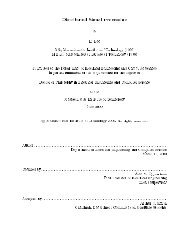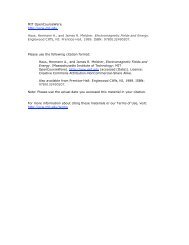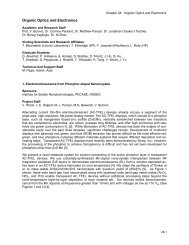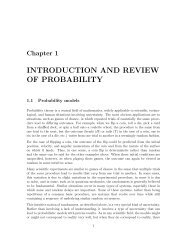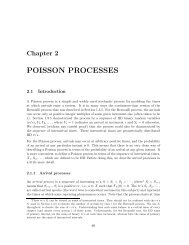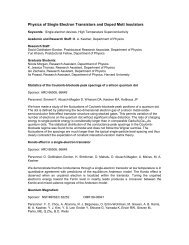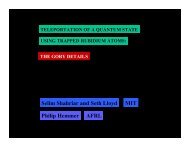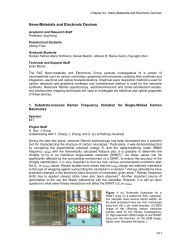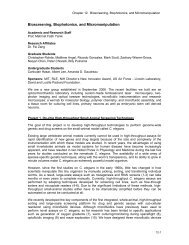Automotive Power Generation and Control - IEEE Xplore
Automotive Power Generation and Control - IEEE Xplore
Automotive Power Generation and Control - IEEE Xplore
Create successful ePaper yourself
Turn your PDF publications into a flip-book with our unique Google optimized e-Paper software.
PERREAULT AND CALISKAN: AUTOMOTIVE POWER GENERATION AND CONTROL 627<br />
clamped using a transient voltage suppressor (TVS). This is<br />
much less practical with the long, high-voltage transients in<br />
conventional systems. It may be concluded that rapid transient<br />
suppression can be achieved within the framework of the new<br />
system. This is valuable in present-day 14-V alternators, <strong>and</strong> of<br />
central importance for future high-voltage alternator systems.<br />
VI. JUMP START TECHNIQUE<br />
There is a desire to introduce 42 V <strong>and</strong> dual -V automotive<br />
electrical systems in the near future. Providing jump<br />
start capability for 42-V systems from 14 V or 28 V is a major<br />
deployment issue. To solve the jump-start problem, expensive<br />
dc/dc converter solutions are usually considered. In this section,<br />
we show that jump start can be implemented using the alternator<br />
<strong>and</strong> the switched mode rectifier. It is shown that the low<br />
voltage charging source connected between the machine neutral<br />
<strong>and</strong> system ground can be used to charge the 42-V bus by<br />
utilizing the alternator synchronous inductances <strong>and</strong> SMR as a<br />
dc/dc converter.<br />
Fig. 15.<br />
42-V jump start charging technique using the SMR.<br />
A. Motivation<br />
A dual- or high-voltage system having a starter motor coupled<br />
to a high-voltage bus requires a charged high-voltage battery<br />
to start. In cases where the high-voltage battery is not fully<br />
charged or is depleted, it is desirable to be able to charge the depleted<br />
high- voltage battery from a low-voltage source (such as<br />
a 14-V or 28-V system) in order to provide jump-start capability<br />
for dual/high voltage systems. In an automobile which includes<br />
only a single high-voltage system, one may desire to transfer energy<br />
from a low-voltage power source, battery or alternator of<br />
a different vehicle to the high-voltage system. In a dual-voltage<br />
system, one may desire to transfer energy from the low-voltage<br />
battery of the dual-voltage system to the high voltage battery of<br />
the dual-voltage system or from the low-voltage battery or alternator<br />
of a different vehicle to the high voltage battery of the<br />
dual-voltage system.<br />
B. Jump-Charging Implementation<br />
Here we show that the alternator <strong>and</strong> switched-mode rectifier<br />
can be used to implement jump charging in dual/high voltage<br />
systems (e.g., 42-V or -V systems.) One possible way to<br />
implement jump-charging within the framework of the new alternator<br />
system is shown in Fig. 15. In this scheme, the positive<br />
terminal of the charging source is connected to the machine<br />
neutral while the negative terminal of the charging source<br />
is connected to system ground. (Note that the machine back-emf<br />
voltage sources are not present since the engine/alternator in the<br />
vehicle to be jump-charged is not running.) This scheme enables<br />
the switched-mode rectifier to be used in conjunction with the<br />
alternator machine inductances as a dc/dc converter to charge<br />
the battery at the output of the switched-mode rectifier from the<br />
charging source. This represents an important improvement in<br />
the alternator system functionality over what is achieved in conventional<br />
systems.<br />
Fig. 16. Experimental results demonstrating the alternator/SMR-based jump<br />
charging technique. A 14-V jump charging source is utilized. The illustrated<br />
results represent a delivered output power of about 920 W at 87% efficiency<br />
(horizontal: 5 s/div; vertical: 20 A/div, 10 V/div).<br />
C. Experimental Results<br />
Fig. 16 presents experimental results from a jump-charging<br />
test using a low voltage (14 V) source connected to the machine<br />
neutral to deliver energy at the high-voltage alternator output.<br />
The results of Fig. 16 show a prototype alternator jump-charging<br />
system delivering approximately 920 W at 43-V output from a<br />
14-V source, with an overall efficiency of about 87%. This capability<br />
substantially exceeds the minimum necessary in practice,<br />
<strong>and</strong> is achieved at little incremental system cost.<br />
VII. DUAL-VOLTAGE APPLICATIONS<br />
In recent years, dual-voltage electrical systems have received<br />
much attention as a means of introducing a higher-voltage<br />
supply into vehicles [1], [2], [8]–[12]. A dual-voltage electrical<br />
system (e.g., V) provides the high-voltage supply desirable<br />
for many high-power loads, while retaining a low-voltage<br />
bus for those components which cannot be immediately<br />
redesigned for higher voltage or do not benefit from it. A<br />
variety of dual-voltage architectures are presently under consideration.<br />
The most widely considered architecture employs<br />
a high-voltage alternator <strong>and</strong> a dc/dc converter [Fig. 17(a)].<br />
DC/dc converter-based systems feature high b<strong>and</strong>width control



